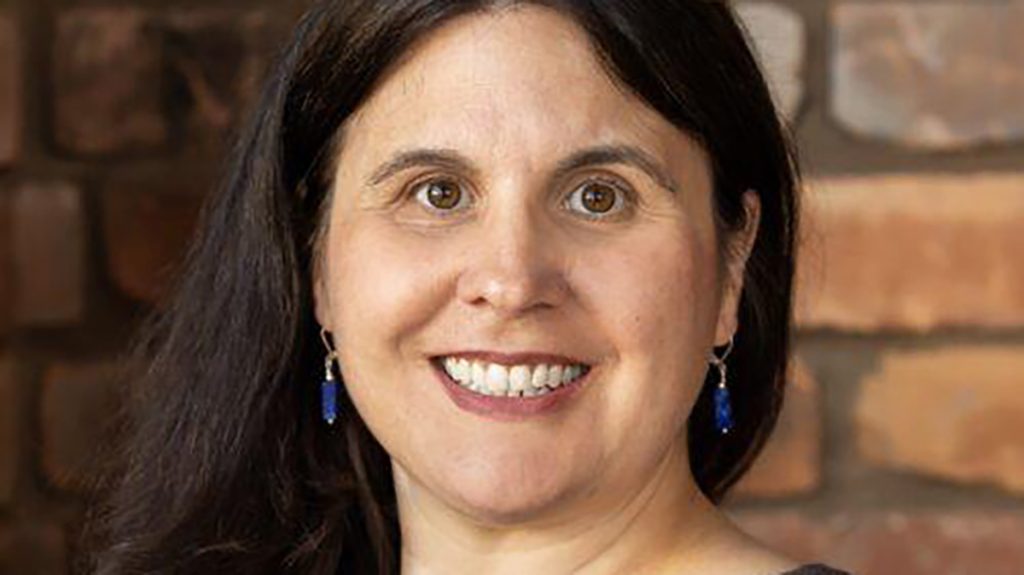
Establishing a viable nonprofit newsroom
Nina Misuraca Ignaczak shares lessons from her six-year journey of bootstrapping to finding a financial footing
Nina Misuraca Ignaczak is the founder and executive editor of Planet Detroit, which she launched on Substack in 2019 to cover local climate, environment and public health issues. Her digital media start-up has doubled revenue and audience almost every year, landing a $500,000 grant last year from the MacArthur Foundation.
I spoke with her about some of the lessons she has learned on the journey of building a nonprofit newsroom.
Williams: You started Planet Detroit six years ago with a staff of one. Can you talk about its origins?
Ignaczak: I’d been kicking the idea around in different iterations for about a decade. And then my dad passed away in January 2019 and I just decided: “Life is short. I should just do this. I’m going to do it.” I started a Substack newsletter and called it Planet Detroit. I began by doing news aggregation around local environmental reporting, because it at least gave me an idea of what was out there and what the gaps were. And people started signing up for it. I guess they thought it was a good thing. Pretty soon, I had 1,000 followers.
There wasn’t a lot of environmental and climate reporting in 2019. It was a specialty, and a lot of reporting focused on institutional voices and authorities. And this was all post-Flint water crisis. So I decided to see if we could create something different and better.
People seemed to like it, the list kept growing. I built a newsletter, then a website later that year. In 2020 we found a fiscal sponsor, got our first grant, and participated in the collaborative fundraising effort called NewsMatch.
Williams: Where did you get the funding to launch?
Ignaczak: It was entirely bootstrapped, not that I had much to invest. I was working, doing a lot of freelance. I was not paying myself for anything for Planet Detroit, but was paying for any tech stack and any freelance writers out of my own earnings, which my husband didn’t love. I didn’t pay myself until 2023 and it was still my side gig.
Williams: When did you first get outside financial assistance?
Ignaczak: Our first grant was from the Fred and Barbara Erb Family Foundation to report on lead paint. I think it was a $30,000 one-year grant, which enabled me to build the organization. It just slowly grew from there.
Williams: How did that funding trajectory look?
Ignaczak: In the first year or first two years, it was a lot of small project grants, $5,000 grants that had a ton of overhead, in terms of participating in cohorts and reporting requirements. I did, to a great extent, shape the reporting to the grants we would get and just try to align grants to what we wanted to do. And that was how we got through 2020, 2021.
We started getting some more investments via the Kresge Foundation. They funded our community fellow and our Neighborhood Reporting Lab. We got some grants from the American Press Institute. We were part of the Facebook Newsletter Project before it went defunct. We received small grants from the Institute for Journalism & Natural Resources, the Rita Allen Foundation for science collaboration and the Michigan Humanities Council for documentary work.
Then last year, we got some more substantial investment from Press Forward through their first call and a family foundation in Ann Arbor, Michigan. Our big grant last year was a surprise: It was an operating grant of $500,000 over three years from the MacArthur Foundation. We’ve also gotten some matches through NewsMatch from The Joyce Foundation and Knight Foundation. But it’s been so many small grants, which isn’t ideal, because they take a lot of administration. Over that time, our reader donations have increased but they still are not paying for one person.
Williams: Early on, you applied for everything you saw, which were a lot of small grants. Do you think that was the right strategy?
Ignaczak: I don’t think there was an alternative, especially if we didn’t want a paywall. I don’t know. I had some limitations: In the beginning, we said we wouldn’t take money from utilities or oil companies. If I was going to build something today and not rely on grants and philanthropy, it would have to have a paywall, and it would probably be more of a niche B2B publication.
Williams: What have you learned from fundraising and the grant application process?
Ignaczak: I’m not necessarily a big risk taker and I can get discouraged from all the competition but my Director of Community Journalism [Martina Guzmán] taught me this: Just put your head down and focus on what you’re doing and try not to compare yourself with everybody else. I think that’s how I’ve gotten through, by believing in what I’m doing. Obviously, you need a strategy and a plan to keep raising money and do good work. But, I’m trying not to be too overwhelmed by the enormity of the task and to acknowledge the positives. I had a whole spreadsheet of the wins and setbacks, trying to look at them side by side, month by month, and then saw “Alright, five pretty good things happened and maybe one or two setbacks happened.” That kind of framing motivates me.
Williams: At this year’s LION Independent News Sustainability Summit in St. Louis, you and Jon Greenberg of Poynter Institute hosted an honest breakout session on the potential perils of reporting grants, which many newsrooms use as part of their revenue considerations, even though they may only produce $2,000 to $15,000 titled ‘Grant-funded reporting projects: Be careful what you wish for.’ What kinds of things came out of that discussion?
Ignaczak: Reporting grants that have deadlines can be a helpful motivator. The downside is that sometimes it’s not quite enough time. Sometimes the time frame of the grant is all wrong.
Will it advance your mission? Is it going to bring you visibility that you would not have had? Would you not do the work otherwise?
Williams: Speaking of LION, you received the organization’s Sustainability Award for Financial Health in 2024 in the Small Revenue Tier. In that year, you doubled Planet Detroit’s audience and web traffic. What were some of the strategic moves you made that year?
Ignaczak: We really started focusing on SEO where we had been slacking off on it before so the audience grew naturally from that. Financially, I didn’t do anything different; I had just been doing it longer. I have a system for cash flow projection and understanding how much runway we have and a plan for future revenue.
Williams: Planet Detroit also raised $18,000 that year from 35 Impact Partners. What is that program?
Ignaczak: When I started Planet Detroit, someone I knew previously called me up and said ‘I love what you’re doing, and I want to volunteer to help you.’ She had this idea to get local organizations to fund us as members. That was in 2020 and that has continued! A lot of the organizations who are Impact Partners have been Impact Partners from the beginning. It’s an annual membership for organizations, whether businesses or nonprofits. We list them in our email footer. They’re listed on our website. They get discounts on ads. We do a quarterly Impact Partner advisory call where they network with everybody. Sometimes we get story ideas out of that. What I would like to do in this coming year, if I can get more capacity, is to start doing more webinars and conversations with Impact Partners.
Williams: Now, you’re hiring a Chief Partnerships and Revenue Officer, tell me about that?
Ignaczak: Yes, the idea is that we want to generate revenue in partnerships, building connections to the community and not being transactional. We’re really trying to cultivate
ways to reach our audience differently and inspire people to give.
The main finding in our sustainability audit was that we were at the point where we need to have somebody focused on revenue. I personally am not skilled in all of the things that we need to do and there are probably other things that I could be better focused on, so I’m really looking for both the skills and the capacity.
Williams: Any advice to those who are considering starting a newsroom or start-ups facing financial challenges?
Ignaczak: You really have to differentiate yourself. You can’t assume anything is stable. I would say, try to start with the audience and find a way to get support from them. It’s been a really fun journey. It’s been stressful, it’s been rewarding. I got to do things I never thought I’d be able to do, and I would do it again.
Cite this article
Williams, Monica (2025, Oct. 16). Establishing a viable nonprofit newsroom. Reynolds Journalism Institute. Retrieved from: https://rjionline.org/news/establishing-a-viable-nonprofit-newsroom/
